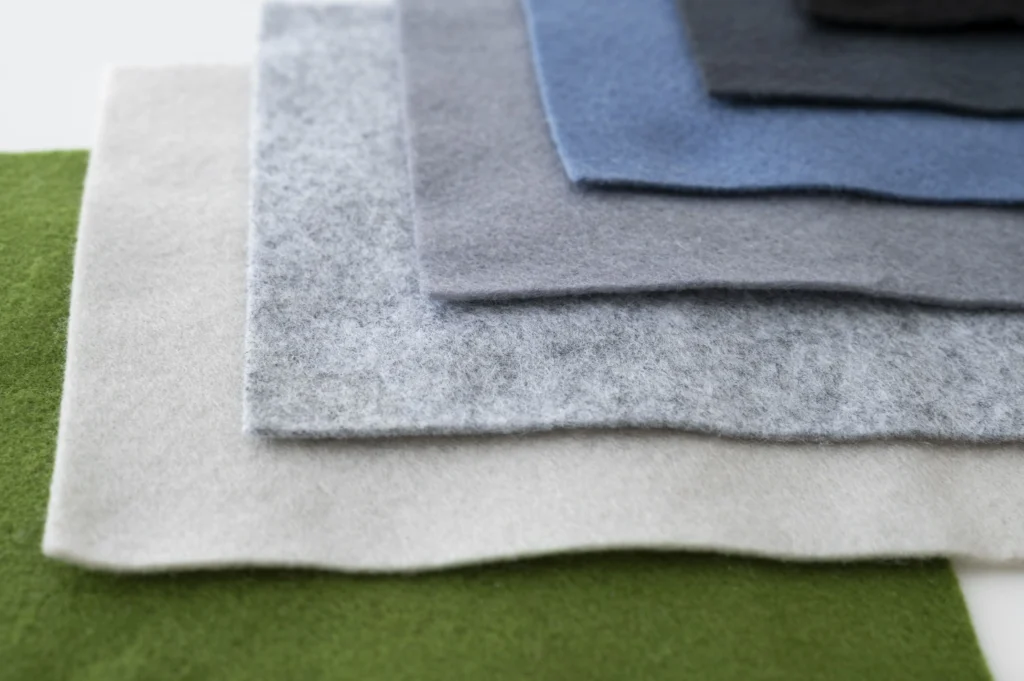
When it comes to the world of fabrics, there are two main categories that stand out: woven fabrics and knit fabrics. Both have unique characteristics that make them more or less suitable depending on the type of project you want to make.
Understanding the differences between these two types of fabrics is essential to choosing the best option for your needs, whether you are looking to create clothing, accessories or decorative items.
What are woven fabrics and knitted fabrics?
Woven fabrics: Las telas tejidas son aquellas formadas por la intersección de dos hilos, uno longitudinal (urdimbre) y otro transversal (trama). Este entrelazado crea una estructura firme y resistente. La técnica ha sido utilizada desde tiempos antiguos y permite la creación de distintos patrones de entrelazado, como el tafetán o el sarga.
Knitted fabrics: Unlike woven fabrics, knit fabrics are created by forming continuous loops from a single thread. This process, usually done by machine or manually with needles, produces a more stretchy and flexible fabric. It is popular for making comfortable clothing, such as T-shirts or sweaters.
How woven fabrics are made
The manufacturing process of woven fabrics involves the use of looms, where the warp threads are stretched lengthwise and the weft threads are interlaced perpendicularly. Depending on how these threads are interlaced, different textures and strengths can be obtained.
This process can be made more rigid, creating fabrics that are less flexible but highly resistant and durable. Some of the most common woven fabrics include denim, canvas, and linen.
The manufacturing process of knitted fabrics
Knitted fabrics, on the other hand, are produced by creating a series of interconnected loops from a single thread. This method allows the resulting fabric to be more elastic and therefore fit the body better.
Circular or flat machines are responsible for forming these loops. Garments made from knitted fabrics are usually softer and more comfortable. Fabrics such as jersey, rib and piqué fall into this category.
Key differences between woven and knitted fabrics
Although both woven and knitted fabrics have their applications and advantages, the differences between them are fundamental:
- Elasticity:Knit fabrics are inherently more elastic due to the looping in their construction, which allows them to stretch and return to their original shape. In contrast, woven fabrics are less elastic and stiffer, unless they contain stretch fibers such as spandex.
- Texture: Knit fabrics tend to be softer and more comfortable, making them ideal for fitted garments or casual wear. Woven fabrics can be stiffer and more structured, offering a more formal or rugged appearance.
- Applications: Woven fabrics are commonly used in formal wear, tailoring, or projects that require sturdier structures, such as curtains, bags, or outerwear. Knit fabrics, because of their flexibility, are used in T-shirts, sportswear, sleepwear, and sweaters.
- Durability: In general, woven fabrics tend to be more durable and abrasion resistant due to their interlocking structure. Knitted fabrics, being more stretchy, are more susceptible to deforming over time if not properly cared for.
Advantages and disadvantages of woven and knitted fabrics
Advantages of woven fabrics:
- High durability and resistance.
- Greater ability to maintain shape and structure.
- Ideal for projects that require a rigid or formal finish.
Disadvantages of woven fabrics:
- Little elasticity, which can make them feel more comfortable in tight clothing.
- They tend to wrinkle more easily.
Advantages of knitted fabrics:
- Excellent elasticity and flexibility, making them comfortable to wear.
- Perfect for casual and sportswear that needs to adapt to body movement.
- Greater softness to the touch.
Disadvantages of knitted fabrics:
- Less durable compared to woven ones, as they can deform over time.
- Greater propensity to pill or wear in high friction areas.
Care and maintenance of woven and knitted fabrics
Caring for woven fabrics often requires more attention, as they can wrinkle and lose their original shape if not properly ironed. Some woven fabrics may shrink if not washed in cold water, so it is important to check the care instructions before washing and ironing.
On the other hand, knit fabrics require more delicate handling during washing, as they can become deformed if hung to dry or if they are stretched too much while wet.
It is best to dry them flat to maintain their shape. It is also advisable to wash knitted fabrics with mild detergents and avoid high temperatures.
When choosing between woven and knit fabrics for your next project, it’s essential to consider the characteristics and purpose of each.
While woven fabrics offer structure and durability, knit fabrics excel at comfort and stretch. Both types of fabric have their place in the world of fashion and design, but the choice will depend on your specific needs.
Whether you’re looking for a durable finish or a soft, flexible garment, knowing the differences will help you make the best choice.